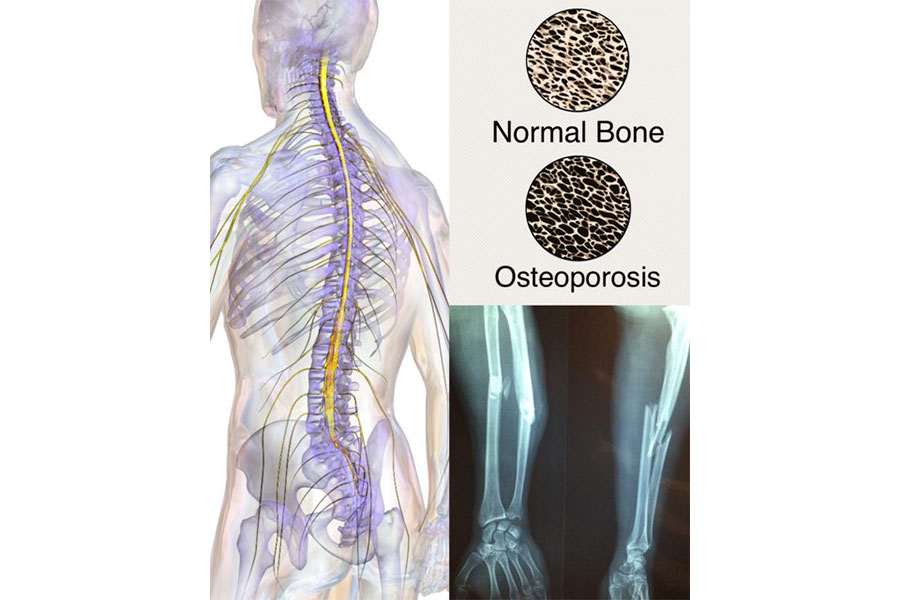What is a pathological fracture?
Spinal cord injuries cause life-altering paralysis of the limbs and place the patient at risk for long term complications, including pathological fractures. A pathological fracture is a broken bone that is caused by disease, rather than injury. After a person suffers a spinal cord injury, they have immediate bone loss in the paralyzed limbs associated with high levels of calcium and immobility. This bone loss can continue for up to 2 years but then usually stabilizes. As a result, these bones develop osteoporosis and are at increased risk for fractures, especially pathological ones. The fragility of the bones is often a direct result of less physical activity, metabolic issues, poor nutrition, smoking, low levels of testosterone and estrogen, medications, and the many other complications of paralysis. Unfortunately, here is virtually no way to prevent this bone loss.
The severe osteoporosis and bone loss make patients with SCI more susceptible to fracture in the paralyzed limbs, especially the legs, as tibia/fibula and femur fractures are the most common. Almost 1/3 of these fractures occur during simple transfers, such as to or from a wheelchair. Other fractures can be attributed to environmental hazards, collisions with objects, equipment failures, and performance of self-care activities.
What Does This Have to do With Criminal Cases?
An assault or a traumatic incident such as a motor vehicle accident on a spinal cord injury patient would be much more devastating than in non-SCI patients. They are more easily injured, and their injuries are more likely to be life-threatening because of the complications that can ensue. It is possible that the fracture was there prior to the trauma, or that the fractures are more severe due to the underlying bone fragility. Expert review by a medical professional is recommended when developing your case.
References:
Freehafer, A. A. (1995). Limb Fractures in Patients with Spinal Cord Injury. Archives of Physical Medicine and Rehabilitation, 76, 823-7.
Ragnarsson, K. T. (2015, January ). Bone loss and fractures in limbs paralyzed by spinal cord injury: Prevention, diagnosis, and treatment. The Journal of Spinal Cord Medicine, 38(1), 10-12. doi:10.1179/2045772314Y.0000000200
Tyiska, C. G. (1998, January 23-24). National Criminal Justice Reference Service; Office for Victims of Crime Archive. Retrieved February 1, 2020, from ncjrs.gov: https://www.ncjrs.gov/ovc_archives/factsheets/disable.htm
Don’t miss our newsletter! Topics covered are:
Assault / Trauma
DUI / General Medical
Child & Elder Abuse / Neglect
Mental Health / Toxicology
Sign up here.











